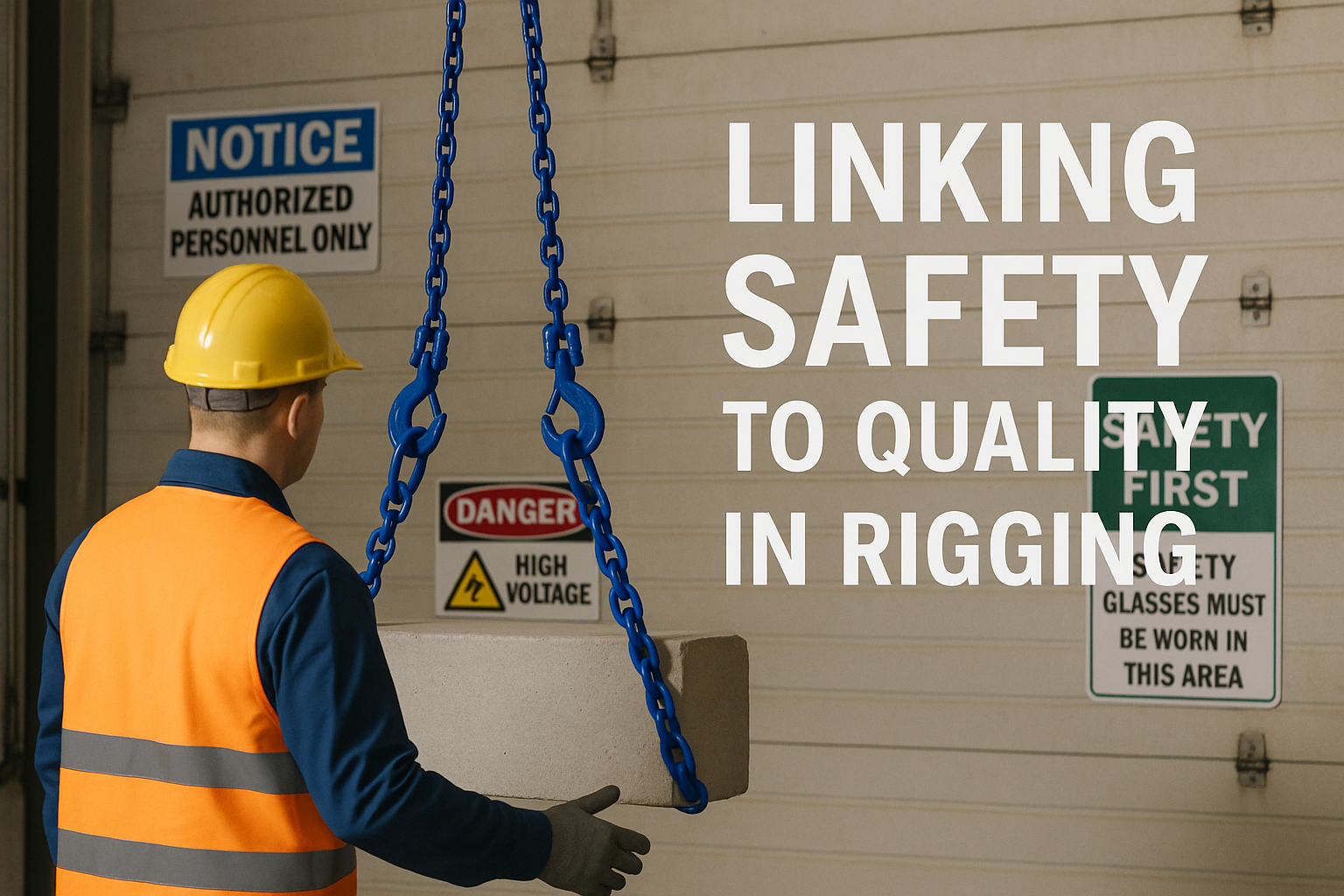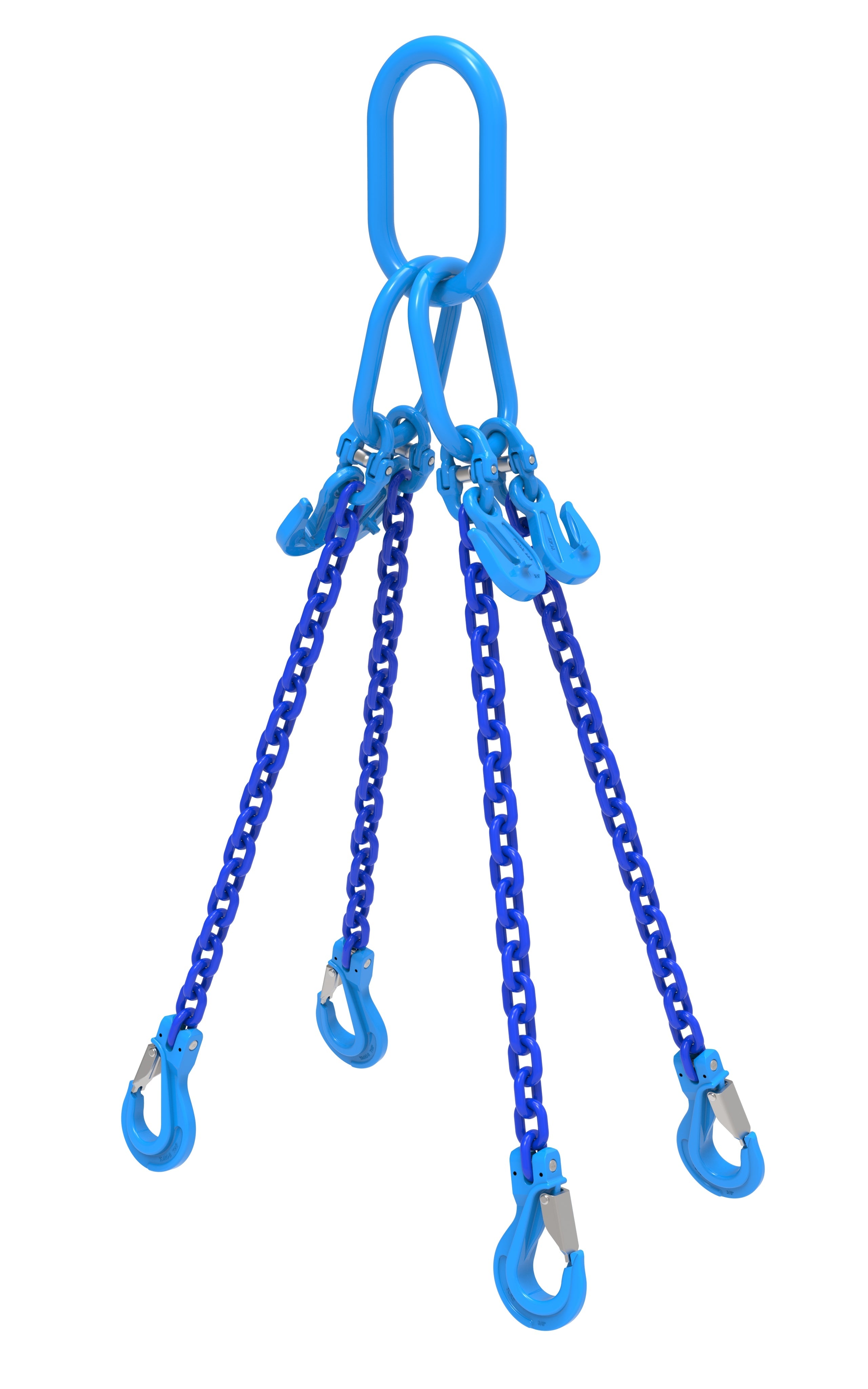What Are OSHA Requirements for Lifting Devices and Why They Matter
OSHA requirements for lifting devices are federal regulations under the Occupational Safety and Health Administration that govern the safe design, operation, and maintenance of mechanical lifting devices including cranes, hoists, slings, and rigging equipment. These standards, primarily found in 29 CFR 1910.184 for general industry and 29 CFR 1926 for construction, prevent workplace injuries and ensure safe working loads are never exceeded during material handling operations.
Employers using overhead cranes, gantry cranes, truck cranes, and other material handling equipment must comply with these mandatory OSHA standards to protect employees from suspended load hazards. This guide covers essential compliance requirements, inspection procedures, and specific regulations for lifting slings—particularly chain slings—that form the backbone of industrial rigging equipment safety.
Understanding OSHA Lifting Device Standards: Core Regulations and Definitions
Primary OSHA Regulations for Lifting Devices
29 CFR 1910.184 covers slings used in general industry, including:
- Alloy steel chain slings
- Wire rope slings
- Metal mesh slings
- Synthetic fiber rope slings
29 CFR 1910.179 addresses overhead and gantry cranes, while 29 CFR 1926 Subpart CC covers cranes and derricks in construction environments.
Key Definitions Under OSHA Standards
- Lifting device: Any mechanical apparatus that lifts, moves, or suspends loads, including supporting accessories
- Qualified person: An individual with recognized credentials, education, or experience to solve problems related to lifting device safety
- Rated load: The maximum working load established by the manufacturer under specific environmental conditions
- Periodic inspection: Comprehensive examination performed by a qualified person at specified intervals
ASME Standards Referenced by OSHA Rules
The Occupational Safety and Health Administration incorporates several ASME standards by reference:
- ASME B30.20: Below-the-hook lifting devices
- ASME BTH-1: Design requirements for below-the-hook lifting devices
- ANSI/AWS D14.1: Welding specifications for structural lifting equipment
Why OSHA Compliance for Lifting Devices is Critical
Statistical Impact and Risk Reduction
According to the Safety and Health Administration OSHA, lifting device failures contribute to approximately 15% of workplace fatalities in construction and general industry. Proper compliance with OSHA standards reduces injury risk by up to 40% in facilities using material handling equipment.
Financial Consequences of Non-Compliance
OSHA violations for lifting devices carry significant penalties:
- Serious violations: Up to $15,625 per violation
- Willful or repeated violations: Up to $156,259 per violation
- Failure to abate: Additional $15,625 per day beyond correction date
Operational Benefits
Compliance with occupational safety standards delivers measurable benefits:
- Reduced equipment downtime through preventive maintenance
- Lower workers’ compensation costs
- Improved operational efficiency through standardized procedures
- Enhanced employee confidence in workplace safety
OSHA Lifting Device Requirements Comparison
|
Device Type |
OSHA Standard |
Inspection Frequency |
Load Testing |
Marking Requirements |
|---|---|---|---|---|
|
Chain Slings |
29 CFR 1910.184 |
Daily visual/Annual periodic |
125% rated load |
Manufacturer, grade, capacity |
|
Wire Rope Slings |
29 CFR 1910.184 |
Daily visual/Annual periodic |
125% rated load |
Capacity, manufacturer |
|
Overhead Cranes |
29 CFR 1910.179 |
Daily/Monthly/Annual |
125% rated load |
Rated capacity clearly visible |
|
Below-Hook Devices |
ASME B30.20/BTH-1 |
Pre-use/Periodic |
125% rated load |
ASME design category, service class |
Step-by-Step Guide to OSHA Lifting Device Compliance
Step 1: Inventory and Classify Your Lifting Equipment
Begin compliance by cataloging all lifting devices in your facility:
- Document each unit with manufacturer specifications
- Verify rated load markings are legible and affixed permanently
- Classify below-the-hook devices according to ASME design categories
- Determine applicable OSHA standards for each device type
Chain Sling Classification Requirements:
For guidance on choosing the correct weight for lifting chains, see How to Choose the Correct Weight for Lifting Chains – SlingSmarter™.
- Only alloy steel chain slings are permitted under OSHA rules
- Each sling must display manufacturer name, grade, and rated capacity
- Environmental conditions must be considered for capacity ratings
Step 2: Implement Required Marking and Documentation
Ensure all lifting devices meet OSHA marking requirements:
- Rated load must be clearly marked and remain legible
- Identification tags must include manufacturer name, serial number, and capacity
- Chain slings require grade marking (typically Grade 80 or Grade 100)
- Maintain inspection records in accordance with OSHA standards
Step 3: Establish Inspection and Testing Protocols
Develop comprehensive inspection procedures:
Daily Pre-Use Inspections:
- Visual examination by the operator before each lift
- Check for damage, wear, or deformation
- Verify environmental conditions are within specifications
Periodic Inspections:
- Performed by qualified person at intervals not exceeding 12 months
- Documented inspection records must be maintained
- Chain slings require detailed examination of links, hooks, and connections
Proof Testing Requirements:
- All lifting accessories must be tested at 125% of rated load before initial use
- Testing must be performed under controlled conditions
- Documentation must verify load capacity and structural integrity
Common OSHA Lifting Device Compliance Mistakes to Avoid
Mistake 1: Operating Without Proper Markings
Many employers fail to ensure rated load markings remain legible throughout the device’s service life. Environmental conditions can cause marking deterioration, making capacity verification impossible during inspections.
Mistake 2: Inadequate Chain Sling Inspection
Chain slings require specialized inspection procedures to detect link elongation, wear, and crack formation. Operators without proper training may miss critical defects that could lead to failure under load.
Mistake 3: Using Modified Lifting Devices
OSHA standards prohibit field modifications to lifting devices without engineering evaluation by the manufacturer or qualified person. Welding repairs on chain slings must follow AWS D14.1 specifications and require re-testing.
Pro Tip: Establish partnerships with certified lifting device manufacturers who provide ongoing technical support and inspection training to maintain compliance with evolving OSHA standards.
Real-Life OSHA Compliance Case Study: Chain Sling Program Implementation
Company Background
A steel fabrication company faced OSHA citations for non-compliant chain slings during a routine inspection, resulting in $45,000 in proposed penalties.
Compliance Implementation Steps
- Equipment Audit: Removed 40% of chain slings that lacked proper markings or showed excessive wear
- Personnel Training: Certified three employees as qualified persons for periodic inspection
- Documentation System: Implemented digital tracking for inspection schedules and maintenance records
- Supplier Partnership: Established relationship with certified sling manufacturer for ongoing support
Results Achieved
- Zero lifting device violations in subsequent OSHA inspections
- 35% reduction in sling replacement costs through preventive maintenance
- Improved employee confidence in rigging equipment safety
- Streamlined inspection procedures reducing administrative burden
Frequently Asked Questions About OSHA Lifting Device Requirements
Q1: What chain sling grades are acceptable under OSHA standards?
A1: OSHA requires alloy steel chain slings, typically Grade 80 or Grade 100. The grade must be permanently marked on the sling and corresponds to the chain’s ultimate strength and working load limits.
Q2: How often must lifting devices be inspected according to OSHA?
A2: Daily visual inspections by operators before use, plus periodic inspections by qualified personnel at intervals not exceeding 12 months. High-use or severe service environments may require more frequent periodic inspection.
Q3: Who qualifies as a “qualified person” for lifting device inspections?
A3: A qualified person has demonstrated competency through education, training, or experience to identify hazards and recommend corrective actions. OSHA does not specify certification requirements, making this an employer responsibility.
Q4: Are proof load tests required for all lifting devices?
A4: Yes, OSHA requires proof testing at 125% of rated capacity before initial use for lifting accessories. This includes chain slings, wire rope slings, and below-the-hook devices.
Q5: What documentation must employers maintain for OSHA compliance?
A5: Employers must maintain records of periodic inspections, proof load tests, and any repairs or modifications. Chain sling records should include inspection dates, defects found, and corrective actions taken.
Essential OSHA Lifting Device Compliance Takeaways
OSHA requirements for lifting devices represent a comprehensive framework designed to protect workers from the inherent risks of material handling operations. The Safety and Health Administration OSHA enforces these standards to ensure mechanical lifting devices operate within safe working loads and undergo proper inspection by qualified personnel.
Key compliance elements include proper marking of rated loads, regular inspection schedules, and thorough documentation of all maintenance activities. Chain slings, as critical rigging equipment, require particular attention due to their widespread use and specific regulatory requirements under 29 CFR 1910.184.
Successful compliance programs combine employee training, manufacturer partnerships, and systematic record-keeping to create a culture of occupational safety. Employers who invest in comprehensive lifting device safety programs not only avoid costly OSHA violations but also achieve measurable improvements in operational efficiency and worker protection.
Next Steps: Conduct a facility-wide audit of your lifting devices, train personnel on inspection procedures, and establish partnerships with certified manufacturers to ensure ongoing compliance with evolving OSHA standards.


